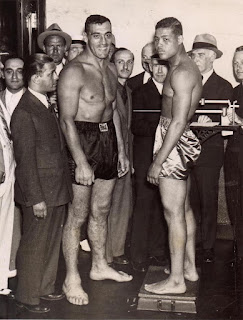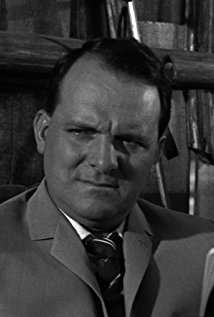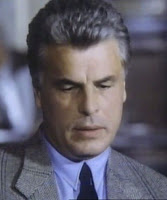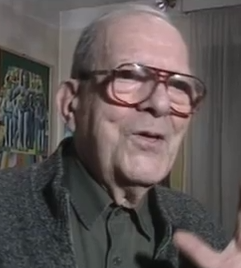Heavyweight’s career dogged by ‘fix’ rumours
 |
| Primo Carnera became world heavyweight champion in New York in 1933 |
After launching his professional career in Paris in 1928, Carnera moved to the United States in 1930 and spent many years there, returning from time to time to Italy, where he had a house built for himself and his family, but not permanently until he was in declining health and decided he would like to spend his final years in his home country.
He won 89 of his 103 fights, 72 by a knockout, although there were suspicions that many of his fights were fixed by the New York mobsters who made up his management team, even including the victory over the American Jack Sharkey that earned him the world title.
Physically, he was a freak. Said to have weighed 22lbs at birth he had grown to the size of an adult man by the time he was eight. By adulthood, he was a veritable giant, by Italian standards, standing 6ft 6ins tall when the average Italian man was 5ft 5ins. His fighting weight was as high at times as 275lb (125kg).
Born into a peasant family in the village of Sequals, around 45km (28 miles) west of Udine, at the northern edge of a plain bordering the Friulian preAlps, Carnera had little option but to leave the area as soon as he was strong enough to work.
 |
| Primo Carnera, who stood 6ft 6ins tall, towered above the average man of his day, as this news cutting shows |
Carnera left at the age of 12, finding his way to France where he did labourer's work, carrying bags of cement, laying bricks or cutting stones. At 17, he joined a travelling circus, where he was variously paraded as a freakshow giant, a strongman, and a wrestler.
He entered the fight business after a journeyman French heavyweight came across him in a park and recommended him to a boxing manager called Leon See. Within two weeks, he was in the ring and within less than 18 months had a wins to losses record of 16-2.
Even then, given Carnera’s lack of technique, there were suspicions that See’s underworld connections were playing a big part in his success. His physical size made him a money-spinner in terms of tickets sales and it was in the interests of both his own camp and his opponents’ for his reputation to grow.
 |
| Vincent 'Mad Dog' Coll, an Irish villain who was part of Carnera's management team |
In his United States debut at Madison Square Garden, Carnera’s opponent fell in unlikely fashion only a minute into the fight and over the next four years Carnera’s bouts followed a similar pattern.
The press nicknamed him ‘the Ambling Alp’ because of his slow movement around the ring and his poor technique yet he remained a major draw. It has been suggested that he even believed his own publicity, convincing himself that his fists somehow packed superpowers.
His winning of the world title came as a major surprise because Sharkey had beaten him comprehensively only a year before. However, when it was not in the interests of his mobster connections for him to win, Carnera often took a heavy beating.
For example, when he defended his world title against Max Baer in June 1934 he was knocked to the canvas 13 times before losing on a technical knock-out.
Yet he was allowed to continue his career and retired only when a combination of kidney failure and diabetes made it impossible for him to continue.
 |
| Carnera ahead of his 1935 fight with future world champion Joe Louis, who knocked him out |
Carnera holds the second-most victories of all heavyweight champions with 88. His 71 career knockouts is the most of any world heavyweight champion, yet his legacy will be forever tarnished by the accusation that many of his fights had pre-arranged outcomes.
In addition to boxing, Carnera enjoyed an acting career in which he appeared in more than 10 films, and wrestled professionally as well.
His story entered popular culture in several ways, with his life depicted in a number of books and films, notably Budd Schulberg’s 1947 novel, The Harder They Fall, which was about a giant boxer whose fights are fixed.
It was made into a film by the Canadian producer and director Mark Robson in 1956, starring Humphrey Bogart. Controversially, it featured Max Baer, playing a fighter the mob could not fix, who destroys the giant in his first fair fight.
There were obvious parallels with the real-life Baer-Carnera fight two decades before. In response, Carnera sued the film company, but was unsuccessful.
Married since 1939 to Giuseppina Kovačič, a post office clerk from Gorizia, Carnera became an American citizen in 1953, when he and his wife opened a restaurant in Los Angeles. They had two children, Umberto and Giovanna Maria.
Carnera died in 1967 in Sequals from a combination of liver disease and diabetes. He was 60 years old.
 |
| The Villa Carnera in Sequals is open to visitors |
The Villa Carnera in the pleasant village of Sequals can be found in the Via Roma, set back from the road near the junction with Via San Giovanni. In what was then a relatively poor community, with simple houses built from local stone, Carnera’s large art Nouveau house, equipped with running water, electric light and heating, seemed like a fantasy palace. Since 2012, the villa, which was sold by the Carnera family to a private individual in 1972, has been open to the public on Sunday afternoons from May to the end of October, displaying an exhibition about Carnera’s life.
| The Corso Vittorio Emanuele II in Pordenone |
Pordenone, in whose province Sequals falls, is an attractive small city of around 50,000 people with a rich history reflected in many beautiful palaces, churches, frescoes and monuments. The city centre has many elegant pedestrianised streets, including the historical Corso Vittorio Emanuele II, linking Piazza Cavour with the Gothic-Romanesque cathedral, which contains among other artworks a painting attributed to the Venetian artist Tintoretto.
More reading:
Vito Antuofermo, the farmer's son who became world champion
How Giuseppe Curreri became Johnny Dundee
The Sicilian boxer whose son was the legendary Frank Sinatra
Also on this day:
1797: The birth of mezzo-soprano Guiditta Pasta
1954: Trieste becomes part of Italy
Home



